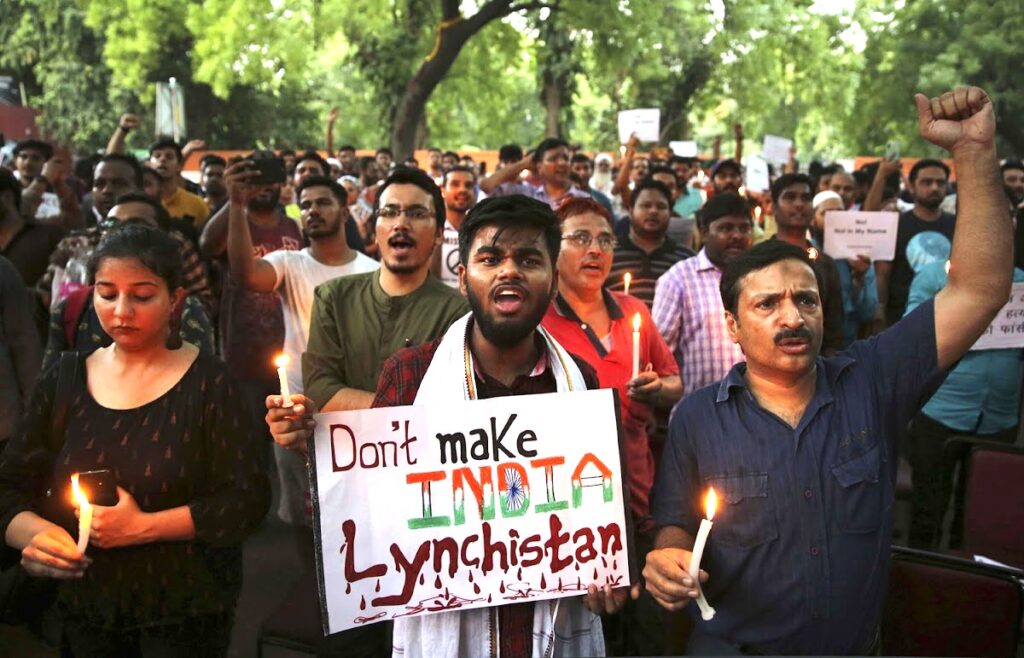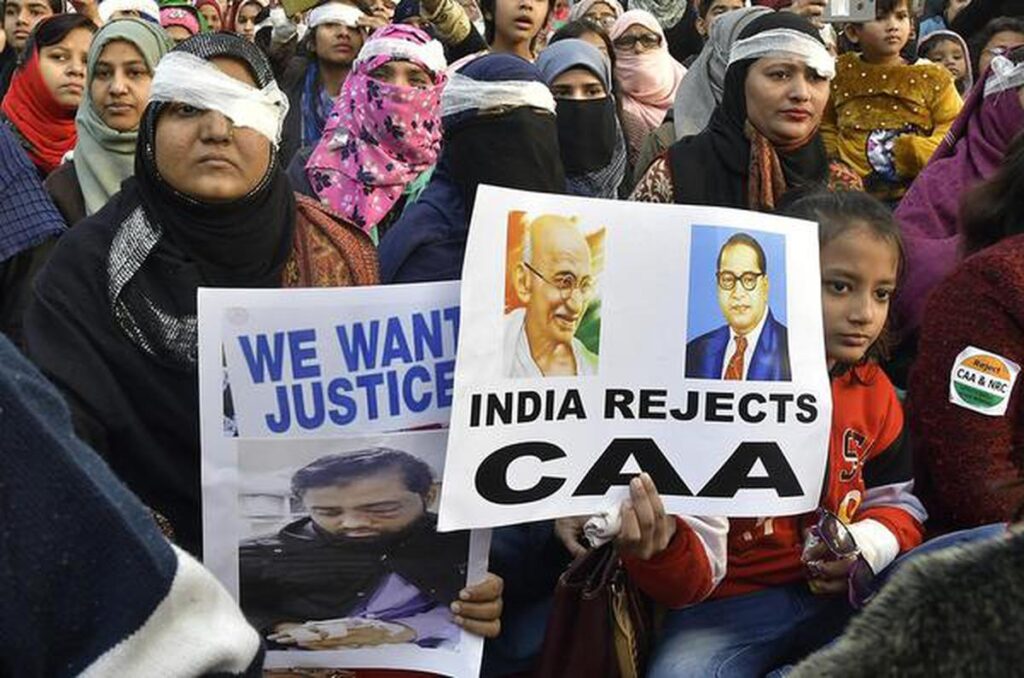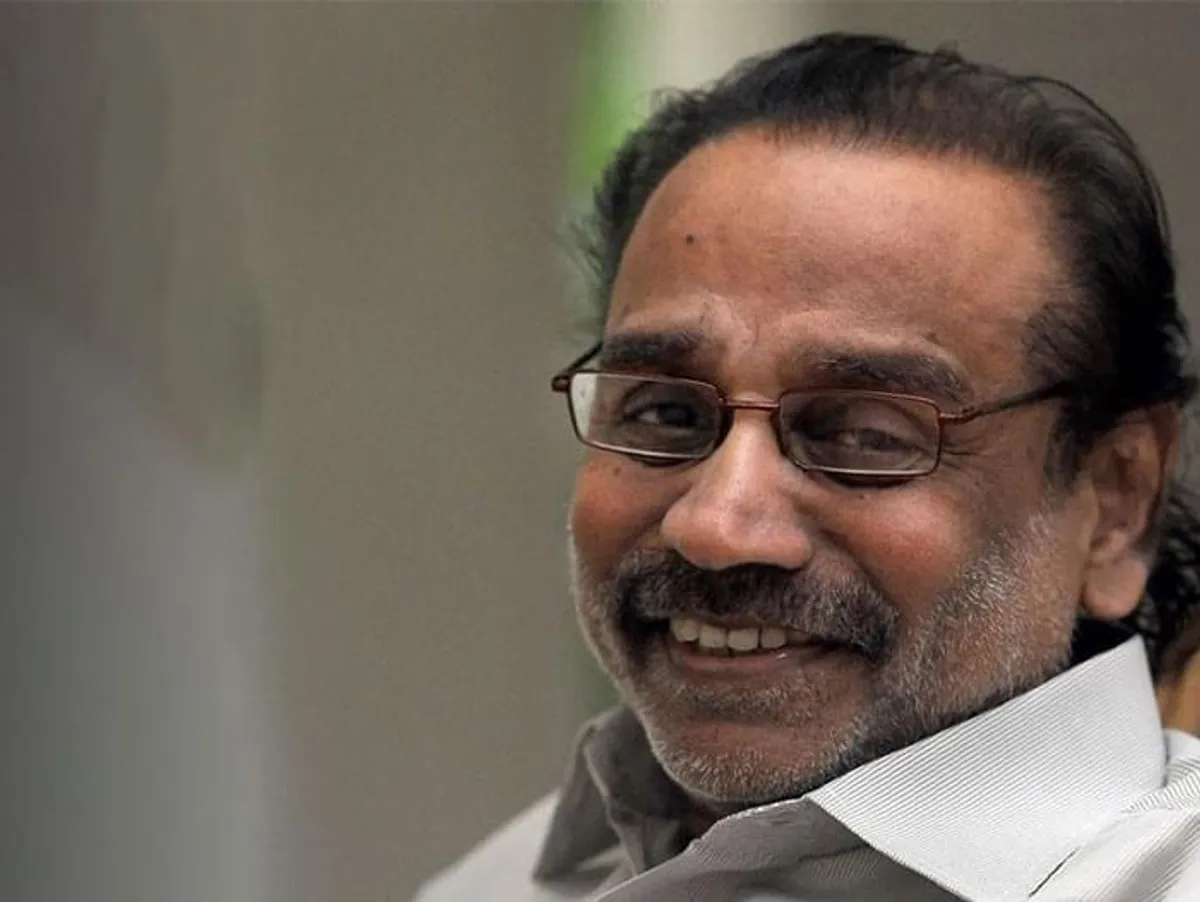
A Clarion Call for the Second Independence Struggle
Following the prolonged and resolute protest by farmers, Modi government was ultimately forced to repeal its anti-people agricultural laws. What are the broader implications of this historic farmers’ movement? How are popular struggles across the globe paving the way for the resurgence of subaltern communities? In what new ways are these movements challenging conventional modes of protest and confronting entrenched power structures? Writer and cultural activist B. Rajeevan offers his critical assessment.
Part-1
Foregrounding the future of Indian politics in the Farmers’ protests
What we face today is the beginning of a second independence struggle —the struggle for the liberation of the people of India against the Empire of global capitalism and its affiliated political cronies.
Characteristically, this new independence struggle is certainly going to be different from the struggles against the British Raj. Looking back, we now realize that the rising Indian capitalists led our struggles against the British Raj after co-opting the political will of the subaltern classes, including farmers and craftsmen from the Indian villages. This liberation struggle resulted in the formation of a nation state. But today, capitalism in India has moved beyond being a self-evident, independent nationalist political power. With the globalization of capital, the capitalist class of India has been transformed into a vassal of the global empire of capital. This has enslaved the people of India once again. With the real subsumption of capital, capitalism in India has become a parallel force in politics that enslaves the citizens of the nation to global capitalist forces. Hence, I argue that the uprising protests in India should be seen as an emancipatory struggle against capitalism and the political classes in cahoots with it. In the Gandhian parlance, this struggle of the downtrodden classes led by peasants, women, and Dalits is for the attainment of ‘Poorna Swaraj’, leaving behind the existing parliamentary swaraj.
While the Neo-Savarna capitalists succeeded in becoming the ruling class through the freedom struggle, which led to a parliamentary Swaraj, the majority of the Subaltern classes remained subjected to this ruling class. Not much research is required to make us aware of the appalling state of the subaltern groups in India, even after seven decades of achieving freedom from the British. Lakhs of farmers who organized themselves as a formidable force against the British now commit suicides across the country. The Adivasi communities, which resisted British colonization from its early years, have become victims of modern capitalist development that leads to their total extinction. The Dalits remain as people who are lynched on sight or are evicted from their land. Our slums are overfilled with the poor and the downtrodden. More than what used to be during the Colonial times. The violence against women and gender based crimes have increased at alarming rates. With more than eighty percent of the country’s wealth in the hands of the top ten percent of the country’s population, the economic inequality between the rich and the poor has become insurmountable.
The Farmer’s Acts passed by Narendra Modi’s government could subject the already broken backs of the poor Indian peasants to the final blows of corporate capitalist expansion. The farmers began revolting against the upper class, whose allegiance to the state power has made them blind to the irrefutable power of the alternative political power of the multitude. The protests of the farmers demonstrated several unique characteristics, making it an event comparable to the revolt against the British that Gandhi led from Champaran. The following article analyses the characteristics of the farmers’ protests as an ‘event’ in its true potential.
One
To establish the farmer’s protest as a significant turning point in the politics of India, we ought to examine the changes in power relations within Indian politics in Post-Independence India. The farmers and labourers who make up the subaltern classes of India were undoubtedly the dynamic force that mobilized India’s Independence from British colonial rule. However, when the ruling neo-savarna elite class directed the formation of the state into an independent sovereign liberal republic, it agreed with the subalterns, a contract with the Constitution of India as an intermediary. This contract safeguarded the interests of the emerging modern capitalists of India by repressing the rising power of the alternative subaltern politics seen during the Independence struggle. Ironically, even though this pact retained its promises by indirectly looting and dividing the people of the country into vote banks, it somehow managed to sustain itself until the Emergency Period.

After the Emergency Period, the foundations of the aforementioned obligatory social contract between the elite and subaltern classes began to shake. The political resurgence of the Dalit and backward-subaltern groups in the wake of the struggles of the national emergency declared by the Indira Gandhi government was a new step towards their emancipation. Alarmed by the rise of the alternative hegemonic power in India, rising from its lowest rungs that threatened their very existence, the Indian ruling classes envisaged ways to suppress it. They mainly used two strategies. One was to stimulate Hindu Nationalism as an aggressive political force. Starting with the BJP leader Advani’s Rath Yatra, this extended to the demolition of the Babri Masjid. The second was the escalation of economic liberalization that led the small-scale farming and labour communities into bankruptcy. After 2014, the current government began to consolidate these two oppressive aspects into one stream. Thus, the oppressive and exploitative forces of the global corporate capitalist empire and the neo fascist political forces in India merged into the same. A new stage of upper-class totalitarianism over the subaltern multitude begins here, one that nullifies the social contract between the liberal state and its subaltern citizens.
It is in plain sight that much of the current government’s socio-economic administrative policies discredit the social contract between the rulers and the ruled in an authoritarian and totalitarian manner. Revoking nearly all of Article 370 in Kashmir, as well as the recently passed Citizenship Amendment Act, delinks people’s power to rule through the government they have elected to power.
Farmer’s Bill was historically similar to the reforms of 1793 implemented by the British under the leadership of Lord Cornwallis. The Rule of Property law transformed agricultural land into private permanent settlements of the Zamindars from whom the British could recover revenue arrears, should they default. This law radically changed the structure of Indian agricultural practices. The terms of the modern private ownership of land subverted the traditional roles and relationships that different castes and tribes had with their land. However, the laws that helped the colonial British government extract revenue out of the land that was not their own did not lead the farmers to mass suicides as we see in the present. It pushed them into poverty and famine in ways that history has never seen before. We need to recognize the similarities in the forces behind Narendra Modi and Lord Cornwallis. While Cornwallis’s farm reforms destroyed the freedom enjoyed by the farming communities in the interest of colonial rulers and neo-capitalist elite classes, the Narendra Modi government’s agricultural reforms were an attempt to sacrifice whatever is left of the rights of the farmers to corporate capitalists.
By annulling the social contract between the liberal state republic and the Indian subaltern groups, this government attempts to enslave the latter under a centralized state power. The subalterns who are expelled from the contract of the liberal-civil society-state do not fall into the old forms of slavery, waiting naively for the ruling classes to liberate them. We see that they have self-organized their leadership towards freedom. In other words, when the nationalist state capitalism merges with global capitalism and its exploitative measures, the subaltern population of the country cannot help but find ways to break free of its identity as a national citizen and transform itself into an entity that directly confronts the global capitalist forces. Thereby, the unified concept of the ‘people ‘in a nation transforms into a heterogeneous concept of the Multitude, where farmers, labourers, Dalits, women, and student groups, which form the bulk of our subaltern groups, find the strength to fight against the forces of global capitalism. This is the political background that informs the protests that I refer to as the second independence struggle.
Two
When we consider the changing political environment, this new independence struggle appears to be a new phenomenon with no political precedents. All freedom struggles seen during the modern age were either political revolts to capture state power or class struggles against visible enemies within or outside of the state. When the subaltern multitude rises against global capitalism, which does not have an inside or an outside, one cannot predict all the potential forms of this struggle. However, the earlier forms of political struggles led by strategies of the elite vanguard groups that lure the subaltern masses into the struggles as obedient followers are not going to repeat as such anymore. It is apparent that, unlike the earlier forms of freedom struggles, it does not seem likely that these struggles will percolate from the upper echelons of caste and class groups to the lower. None of the self-organized groups that we see in the struggles, such as the farmers or the students, are led by elite vanguard groups or by the so-called classes for themselves. From the closed identities, the subaltern sections have risen to the status of singularities. They are enlightened multitudes below par to none. Multitude is not a crowd of individual citizens subjected to the ruling powers. Multitude is the becoming of individuals as multiple singularities in the field of the alternative subaltern autonomous power relations operating outside of the statist power structures. It was clear as daylight that the farmers who rebelled against the government were not puppets of any political party. Their political fortitude was neither derived from an arrangement with the political parties nor from the state power. On the contrary, it was the demonstration of the power of resistance of the subaltern classes that existed before the oppressive ruling powers. It was, in fact, the relationship of the oppressed classes’ resistance to the state power that made the state possible. Therefore, by setting right the upside-down structures of power between the rulers and the ruled, the politics of the multitude enters into a phase which makes the current structures and relationships in power obsolete. In effect, this means that the politics of the multitude will replace the mainstream Western liberal democracy as well as the socialist one-party democracies and other prevailing political forms we see in the present.

What is the reason for it? These new uprisings against global capitalism will not take the form of modern European revolutions or nationalist independence struggles for the mere reason that history will not allow it to be repeated. The revolutions that we have seen in the past were aimed at reclaiming power and authority from the ruling classes. Whether it was a democracy or totalitarian rule, its foundations are fortified by maintaining the hierarchical relationships within the various aspects of these institutions, which are rooted in the transcendence of sovereign power. The emerging alternative subaltern politics will not be able to emulate the paradigm of power relationships seen in the former. The new alternative democratic struggles will replace the transcendent state power with the immanent powers of the subaltern classes. Therefore, the politics of the newly emerging struggles will not follow the models of the modern Western revolutions that aimed at the seizure of sovereign state power. On the contrary, they aim to create a new world order in which the statist hierarchical structures cannot survive.
What we see today is, on the one hand, that global capital has become less reliant on production as capital itself becomes an industry. On the other hand, the main focus of production is shifting away from goods to services, data, knowledge, and effects. The difference and distance between life and work, public and private, has become inconspicuous. The gap between these was distinct during industrial production. In short, when we shift from the factory model of production, when there is socialization of labour and production in the way we see today, labourers’ lives and their modes of production of capital become fused. Even under capitalism, production begins to adopt the characteristics of a biopolitical practice. Life and labour become conjoined into one political entity. Therefore, living itself becomes a political activity. The lives of the people in the multitude who contribute to the labour force with their bodies and minds become a political force in the rising alternative democratic politics. This is in opposition to the decoupled independent plane of politics led by persons who have taken up politics as a job. This new dynamics makes the older politics obsolete. The subaltern multitude, whose life and labour have been politicized through their defiance of the old political superstructure, and the realisation of the power of resistance, create a new world order in which state power relations become defunct.
Therefore, one can argue that the farmers who opposed global capitalism and its cronies in the city of Delhi were a multitude whose lives have been politicized in the ways I have mentioned earlier. Farmers are not a pre-capitalist social category today. There is no division between the vanguard and the backward classes in the globalized capitalist production. The revolting farmers were people who imbibed the political desires of labourers, women, Dalits, and other minority classes- the subaltern class as a whole. When the Narendra Modi government jeopardizes the social contract that was made between the government and the subaltern groups in the post-independence era to global capitalist forces, the farmers took upon themselves the responsibility to save the liberative potentials of democracy. With its essence born out of the subaltern’s desire for freedom, it upholds the real forces of democracy and creates new directions for our democracy.
Considering the essential nature and its newness, these new directions will no doubt be unprecedented and extraordinary. Organizational forms such as the leader-led relationship of liberal capitalist politics or soviet socialist politics will be redundant in this new direction.
(to be continued)
Translated by Pooja Sagar (Indian Institute for Human Settlements, Bangalore)
